Saffron-colored pumpkin challah with sweet cinnamon honey butter will be the hit of your Rosh Hashanah celebration!
Fall is pumpkin season and Rosh Hashanah is a fall holiday. So pumpkin dishes on a Rosh Hashanah menu is a no-brainer. Indeed, pumpkin is a traditional food for Rosh Hashanah, especially among Sephardic Jews, but not only because of the season. Pumpkins are one of the many foods that Jews eat at Rosh Hashanah as a way of expressing their hopes for a prosperous and blessed new year.
Pumpkins were one of the first New World vegetables that Spaniards adopted and indeed, pumpkin quickly became an important part of the Sephardic cuisine. As I have explained in some of my other Rosh Hashanah posts, Sephardic Jews have a particular tradition of serving foods with symbolic meanings during Rosh Hashanah. These symbolic meanings often derive from puns on the name of the food.
The word for squash or pumpkin in Hebrew is qara, which sounds like the Hebrew verbs for “to rip or tear up” and “to read or call out.” Thus, a custom developed among Sephardic Jews to eat pumpkins or squash at Rosh Hashanah and recite a special prayer that any harsh decrees that may have been issued be “torn up” and that the speaker’s merits be “read out” before the Creator.
Luckily, it is easy and fun to incorporate pumpkin into a Rosh Hashanah menu. For example, in my book, The Joys of Jewish Preserving, there is a recipe for an easy-to-make Golden Pumpkin Butter that is sweet and earthy and just tastes like the essence of fall. A jar of this stunning pumpkin butter makes an impressive gift for friends and family at Rosh Hashanah. Pumpkin soup would also make a lovely first course for any Rosh Hashanah meal.
This year, I am adding pumpkin to another traditional Rosh Hashanah food: round challah. Pumpkin bread or pan de calabaza is beloved among Sephardic Jews. I think that this nation of pumpkin spice fanatics will embrace it as well. Pumpkin challah is no harder to make than regular challah and the beautiful saffron color and sweet taste will delight your friends and family.
Below, I explain exactly how to braid a round challah. To make it more like a pumpkin, break off a small piece of dough to create a stem at the center of the loaf. You can even double down on the pumpkin by topping the loaf with pepitas, or green pumpkin seeds. Pepitas are even somewhat traditional: Sephardic Jews often snacked on pepitas, along with nuts and dried fruits, after Shabbat dinner.
If you are not kosher and freely mix meat and dairy, you can make a delicious flavored butter to serve with your pumpkin challah at Rosh Hashanah dinner. I went with a classic cinnamon honey butter because I knew it would taste lovely with the pumpkin. Honey, as I have said many times, is one of the most iconic Rosh Hashanah foods. By eating honey at the new year celebration, we express our hope that the coming year will be a sweet one for our friends and family.
Although this pumpkin challah is especially meaningful on Rosh Hashanah, it would also be a welcome addition to your Shabbat table so long as it is pumpkin season. Or try it at Thanksgiving for an out-of-the-ordinary seasonal treat.
Ingredients
- 4 cups all-purpose flour
- 2 1/4 tsp instant yeast
- 1/2 cup water, approximately 110°F
- 1 cup pumpkin puree
- 2 eggs, at room temperature
- 1/4 cup vegetable oil
- 3 TB sugar
- 2 TB honey
- 1 tsp salt
- 1/2 tsp cinnamon
- 1/4 tsp ground ginger
- Pinch each ground cloves and nutmeg
- Pepitas, sesame seeds, poppy seeds or nigella seeds for sprinkling
- 10 TB butter, softened
- 3 TB honey
- 1/2 tsp cinnamon
- Pinch salt
Instructions
- In the bowl of a standing mixer fitted with a dough hook, combine the flour, yeast, and warm water. Stir to combine. Add 1 egg, pumpkin puree, the vegetable oil, sugar, honey, salt and spices.
- Mix the dough with the dough hook until a smooth dough emerges, about 3 minutes.
- Continue to knead for an additional 5 minutes, The dough should be smooth and elastic. It may be slightly tacky to the touch.
- Place the dough in a bowl that has been oiled on all sides. Cover the dough with a clean cloth and allow it to rise in a warm place for 40 minutes to 1 hour or until almost doubled in size.
- Divide into four equal parts. (I like to use my kitchen scale to ensure my pieces are of equal size.) If desired, break off a small piece of dough for the stem.
- Roll each piece into a long, thin strand.
- To braid the challah, place two of the strands next to each vertically on a board. Weave the remaining two strands horizontally over and under the vertical strands. The result should look like a plus sign with no spaces between the strands. There should be two strands pointing in each direction.
- For each direction, take the strand on the left and cross it over the strand on the right leaving no space between the strands.
- Next, do the same action going the opposite direction.
- Repeat crossing the strands over each other, alternating directions until you run out of dough. Take the ends and pinch them closed and tuck the under the loaf. Add the stem to the middle of the circle.
- Carefully transfer the braided loaf to a baking sheet lined with parchment paper or a Silpat baking mat. Preheat the oven to 400.
- Cover the loaf and allow to proof for 30 minutes to one hour. (To determine whether bread if ready for the oven, gently press with your finger, if the depression fills back up quickly, the bread needs to proof for longer. If the depression fills up halfway, the loaf is adequately proofed.)
- Before placing the loaf in the oven, beat the remaining egg in a small bowl. Brush the egg wash on the challah, making sure to get in the crevices of the braids.
- Sprinkle with seeds if using.
- Bake 15 minutes and check. If stem of pumpkin is browning, cover with foil. Reduce heat to 375.
- Bake an additional 15-20 minutes.
- Allow to cool on a wire rack prior to cutting.
- To make cinnamon honey butter, beat softened butter with honey, cinnamon and salt until combined. Place in a small serving dish. Serve at room temperature.
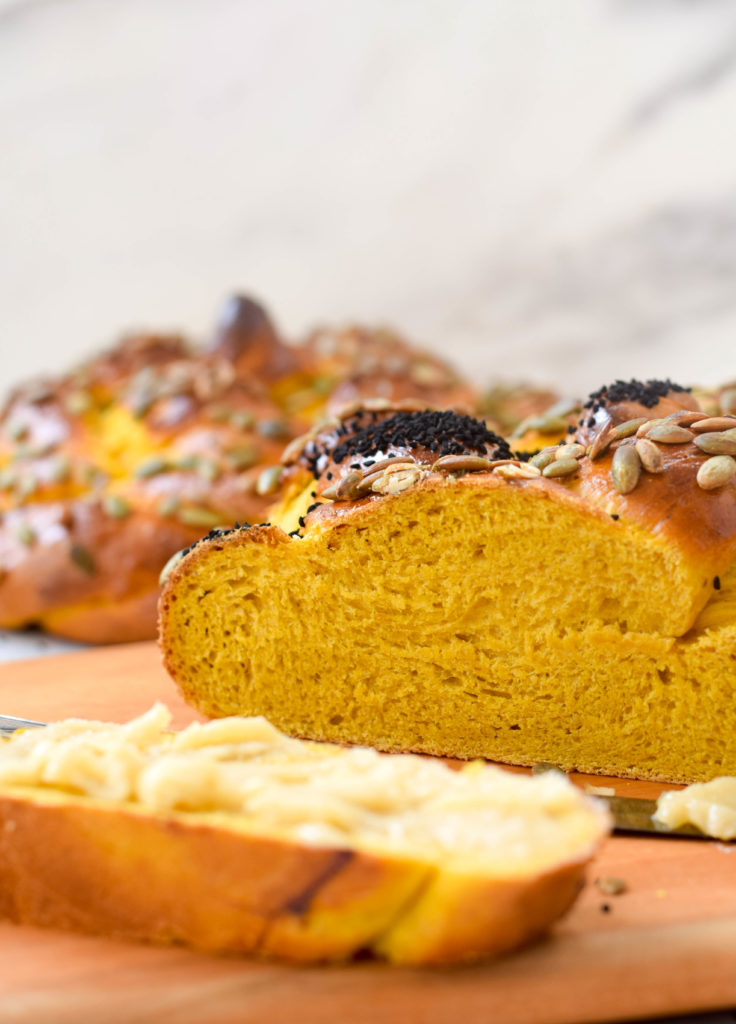
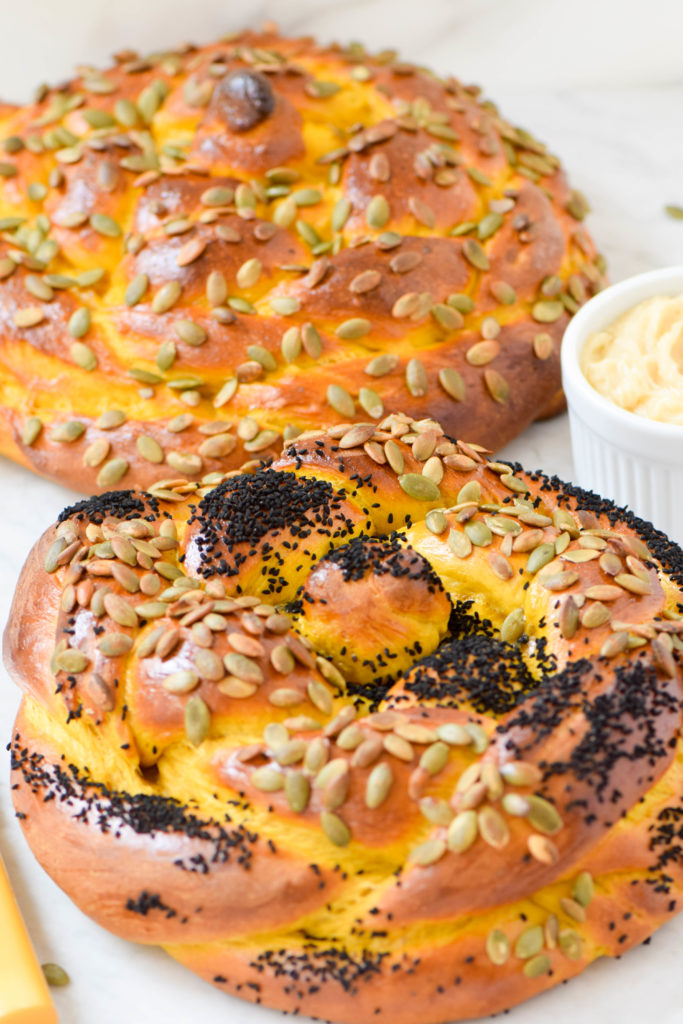
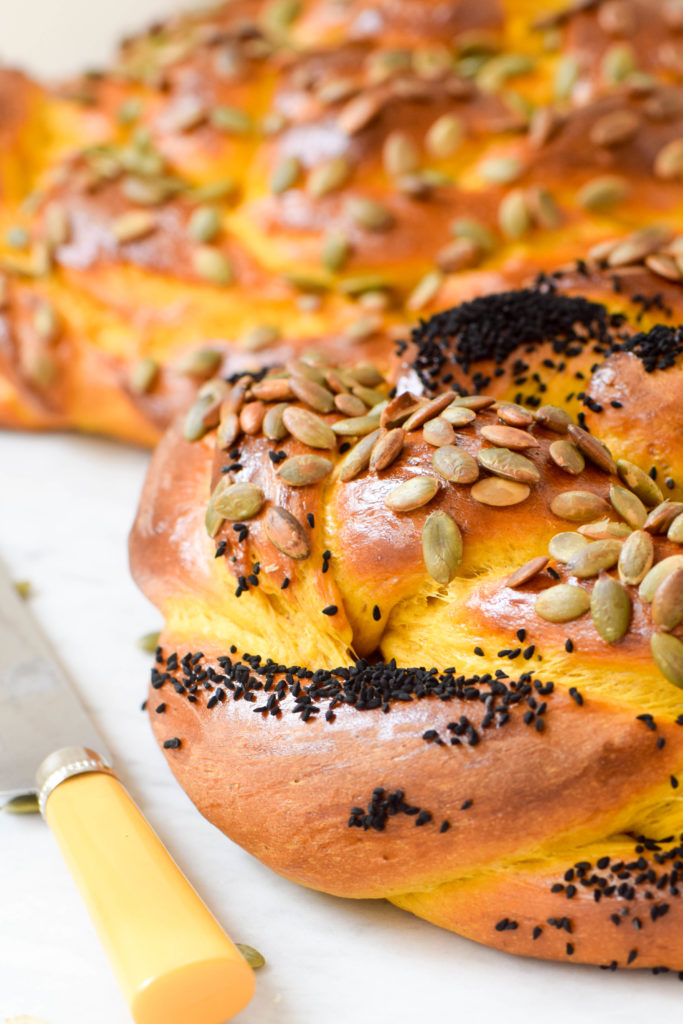
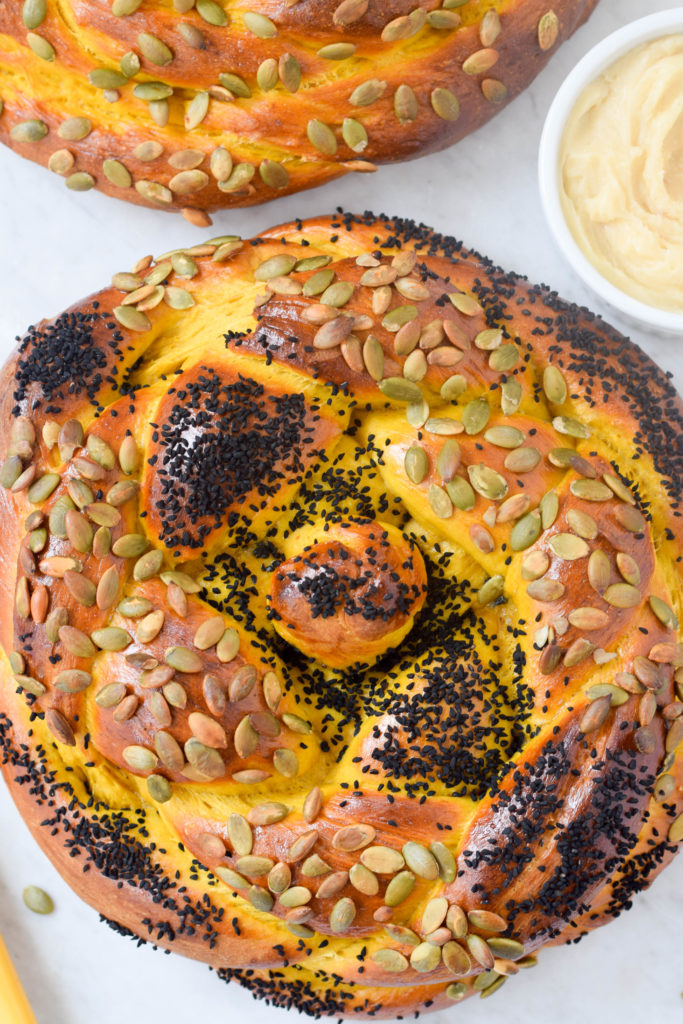
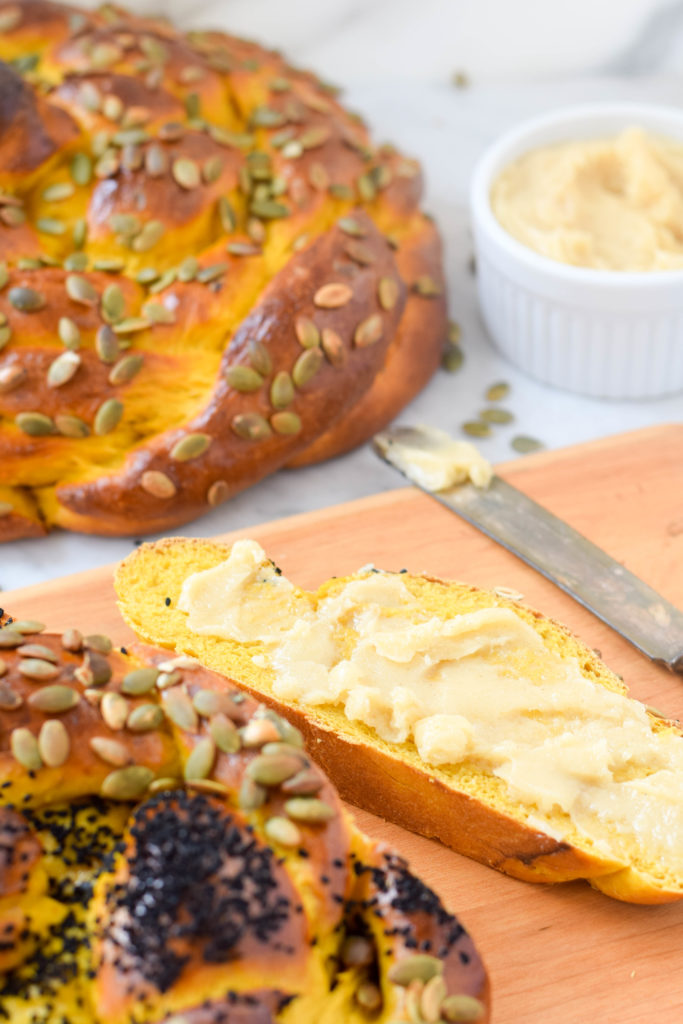
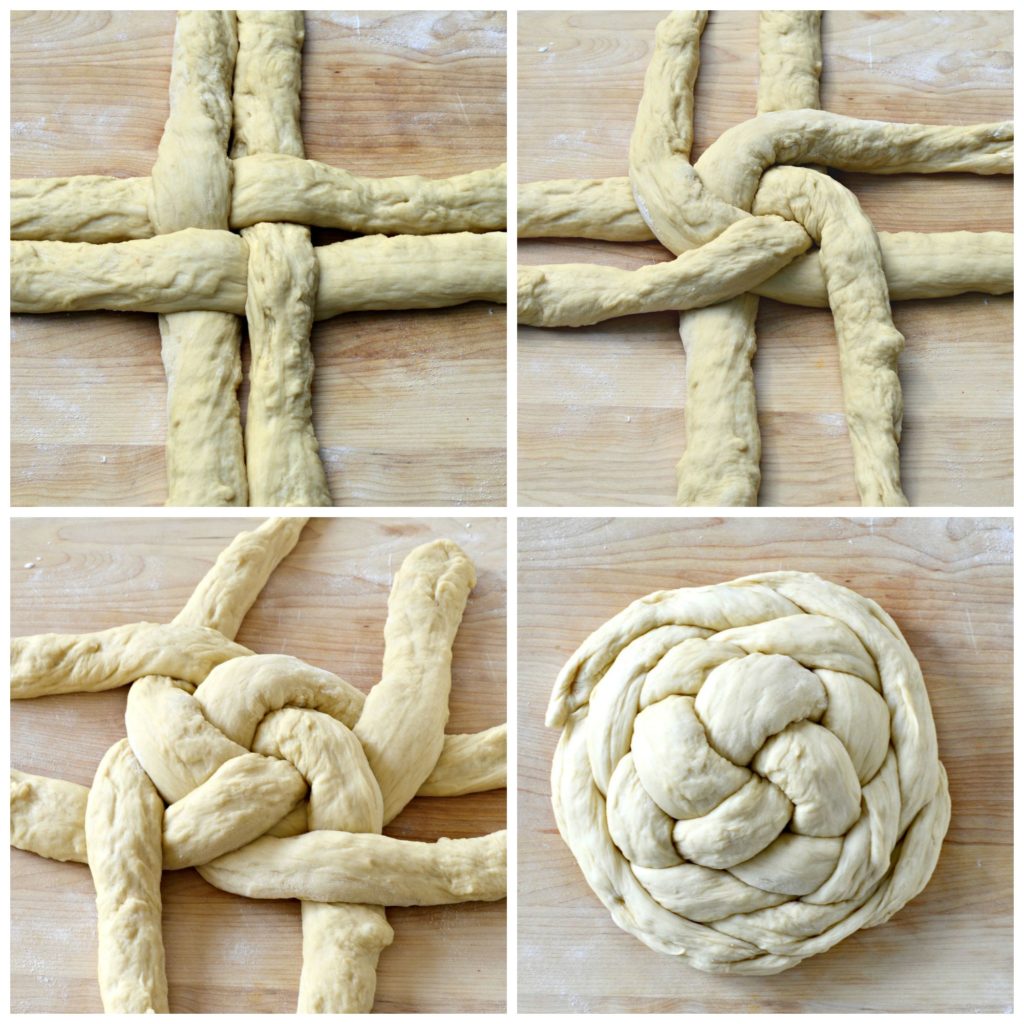
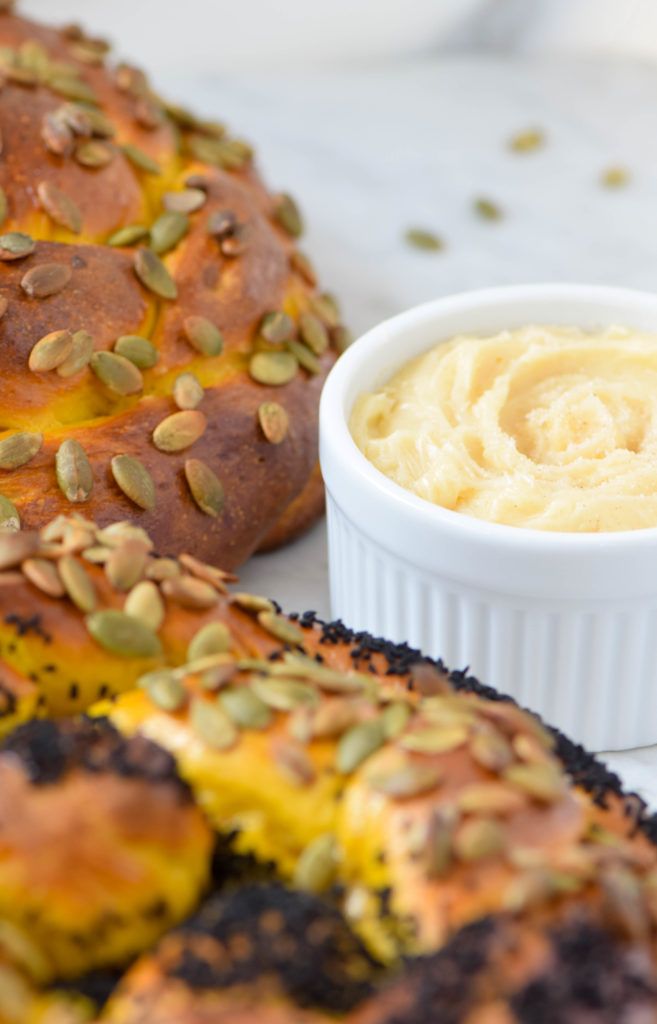
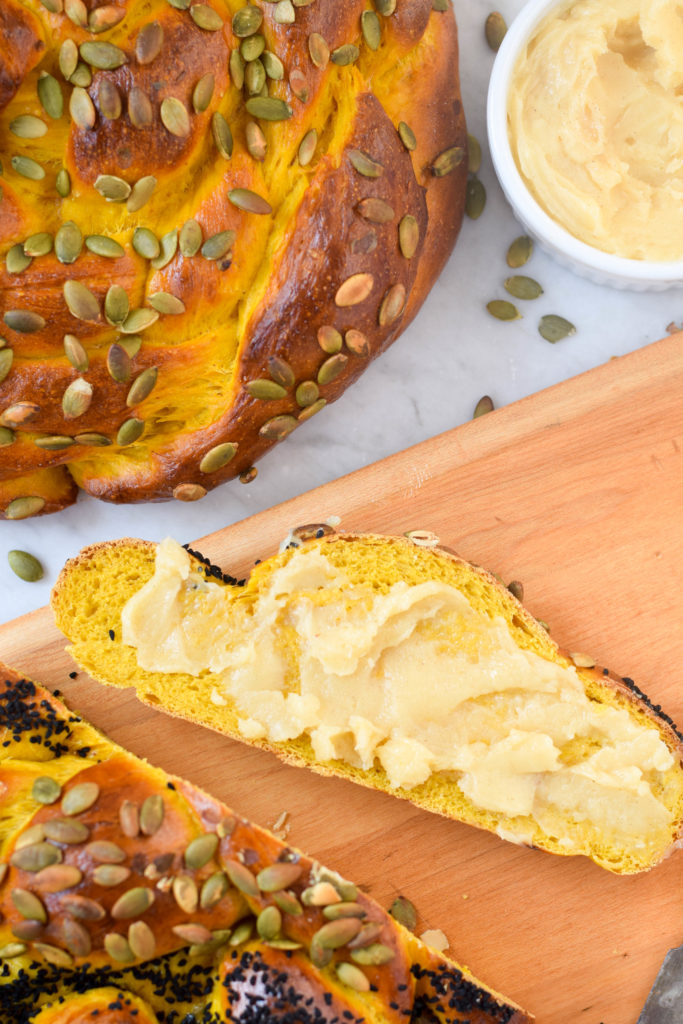
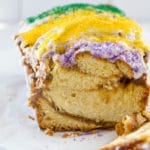
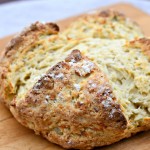
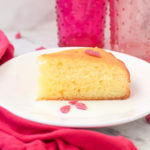
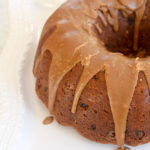
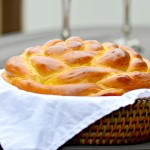
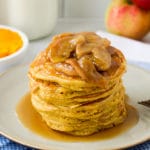
I adore this recipe Emily. What a fantastic idea!
Thanks Beth! I lov how both the pumpkin and the round challah have symbolic meaning.
Beautiful bread and I have to smile when I see how you’ve not only conquered your fear of yeast but excelled!
I know! I have come so far. I definitely credit that afternoon with you to helping me become a bread baker.